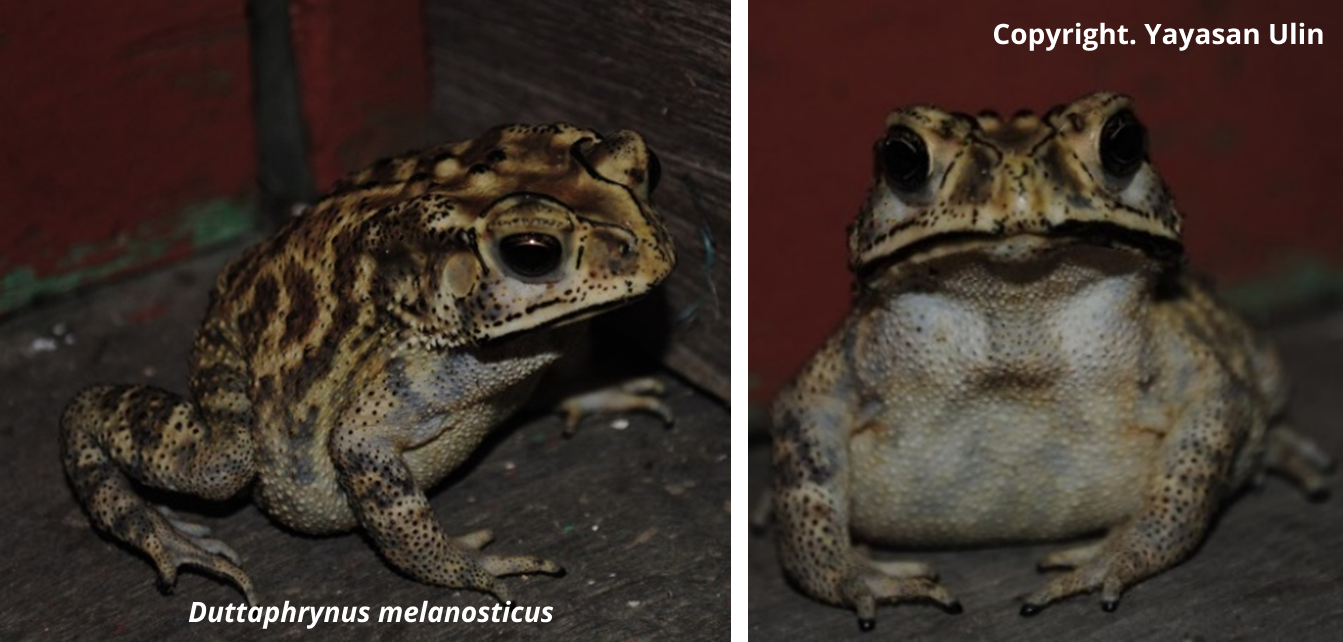Duttaphrynus melanosticus
(Schneider, 1799)
Bufonidae
Nama : Bangkong Kolong/Common Sunda Toad
Deskripsi : Kodok dengan ciri tubuh yang gempal dan berukuran sedang – besar serta berbintil di seluruh tubuhnya. Memiliki kepala yang kecil dengan tungkai belakang yang pendek. Memiliki garis kehitaman yang menonjol antara lipatan mata yang memanjang hingga bagian mata lainnya.
Habitat : Salah satu spesies kodok yang tidak hidup di area berhutan. Spesies ini tidak dapat di jumpai di area rawa mesangat, lebih banyak di jumpai di area yang terganggu manusia dan pemukiman desa. Individu dewasa dapat dijumpai di genangan air hujan atau di bawah lampu jalan, dimana spesies ini mencari makan dari serangga di sekitar cahaya lampu.
Sebaran : Sejauh ini dapat ditemukan pemukiman masyarakat pedesaan atau perkotaan pulau Borneo dan tersebar luas di Asia Tropis.

